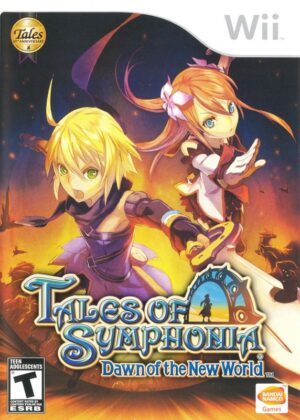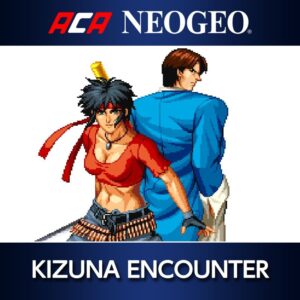Retro Replay Review
Gameplay
Final Fantasy: Mystic Quest streamlines traditional JRPG mechanics into a more accessible package, making it an ideal entry point for newcomers. Instead of random encounters, all enemies are visible on the field or in designated Battle Areas, giving players full control over engagement. This design choice removes frustration from unwanted battles and lets you approach each conflict strategically, choosing whether to bait foes or sneak past them.
(HEY YOU!! We hope you enjoy! We try not to run ads. So basically, this is a very expensive hobby running this site. Please consider joining us for updates, forums, and more. Network w/ us to make some cash or friends while retro gaming, and you can win some free retro games for posting. Okay, carry on 👍)
Exploration unfolds through an overhead perspective in towns and dungeons, while battles shift to a fixed third-person view. Towns offer simple NPC interactions and basic puzzles, whereas dungeons become winding mazes filled with environmental traps and monsters guarding the four elemental crystals. Battle Areas interrupt world navigation with one-on-one fights against specific creatures, often rewarding rare items on victory—an engaging twist that spices up the map traversal.
The turn-based combat itself avoids the Active Time Battle system familiar to series veterans, opting instead for a straightforward command menu. You select Attack, Defend, Item or Spell each turn, with character speed influencing initiative. Since your party never exceeds two members—Benjamin and an AI or second-player companion—each decision feels weighty. Benjamin can equip a variety of armor and four weapon types, while his partner relies solely on preset gear, underscoring the hero’s central role in battle.
Saving is unrestricted, allowing you to record progress at any moment, which encourages experimentation in both exploration and combat. Should you fall in battle, you can retry the encounter immediately, although consumed items aren’t restored—another nod to resource management. This balance of forgiveness and consequence keeps the tension manageable without punishing players unduly.
Graphics
On the Super Nintendo hardware, Mystic Quest employs bright, colorful sprites that pop against lush environments. Each town boasts distinct architectural styles and palettes, making villages feel unique. Dungeons feature clever use of lighting and tile sets to denote elemental themes—glowing crystals in the Earth Temple, frosty floors in Wind Caverns—immersing you in the quest’s core motifs.
Character animations are simple but effective. Benjamin’s sword swings and spell-casting gestures carry enough flair to satisfy while keeping the screen uncluttered. In battle, monsters are rendered with enough detail to convey personality—fiery salamanders skitter in place, water elementals shimmer—adding charm to the encounters without taxing the system.
The world map itself is stylized rather than realistic, with palpable hills, forests, and coastlines that guide your journey visually. Battle transitions use neat pixel effects to draw you into fights, and the HUD remains clean, showing HP and MP at a glance. Although there’s no advanced graphical gimmickry, the consistent art direction ensures clarity and an inviting aesthetic throughout your adventure.
Story
Final Fantasy: Mystic Quest sets its narrative upon the catastrophic disruption of Focus Tower, the world’s spiritual hub. Four monsters have stolen the elemental crystals—Earth, Water, Fire and Wind—and hoarded the keys to the tower’s inner sanctum. As calamities strike villages and landscapes warp, young Benjamin witnesses his own home ravaged by earthquakes, spurring him into action.
Guided by a mysterious old man who reveals Benjamin’s destiny as the prophesied hero, the plot follows a classic quest structure. Benjamin travels from town to town, restoring balance by reclaiming the crystals. Along the way, he gains allies who support him in battle, each character offering brief personality beats that add warmth to the otherwise straightforward journey.
The story never ventures into deep political intrigue or complex character arcs—it’s a lean, heroic odyssey designed for clarity. The stakes remain immediate: save lives, purify the crystals, and confront the ultimate monster before the fifth Crystal of Life succumbs to corruption. Though seasoned RPG players may find the narrative light, its simplicity contributes to the game’s approachable charm.
Overall Experience
As a gateway into the world of role-playing games, Final Fantasy: Mystic Quest excels. Its pared-down mechanics, visible foes and generous save system make it highly accessible. Combat strikes a balance between whimsy and strategy, while exploration segments encourage backtracking with newly acquired abilities or keys—classic RPG design made succinct.
Veteran players accustomed to sprawling side quests and deep character customization might find the experience brief and the combat less nuanced than other series entries. However, the focus on streamlined progression keeps the pace brisk, rarely bogging you down in menus or interminable random battles. It delivers a solid 15–20 hours of polished gameplay from first village to final confrontation.
From a modern perspective, Mystic Quest stands out as a historical curiosity: a “Final Fantasy for beginners” that retains enough franchise DNA—magic spells, elemental themes, crystal lore—to feel recognizable. While it doesn’t redefine the genre, it offers a pleasant, bite-sized adventure with clear goals and a wholesome narrative. For players seeking a bite-sized JRPG or a nostalgic trip back to ‘90s SNES design, Benjamin’s journey through Mystic Quest remains a rewarding experience.
 Retro Replay Retro Replay gaming reviews, news, emulation, geek stuff and more!
Retro Replay Retro Replay gaming reviews, news, emulation, geek stuff and more!









Reviews
There are no reviews yet.